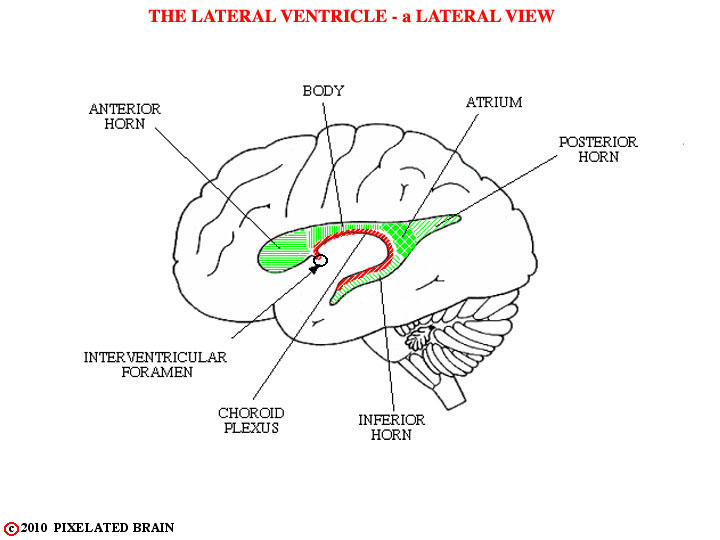
FIGURE 1-52
The lateral ventricle retains its relationship to the caudate nucleus during development (note that the caudate always forms part of the wall of the ventricle) with the result that it is also drawn out into the temporal lobe, bringing choroid plexus along. Additional extensions of the lateral ventricle into frontal and occipital lobes are blind evaginations with no defect in the wall - hence, no choroid plexus.
Because the lentiform nucleus resembles a cone, it will appear triangular in both coronal and horizontal sections through the brain ; it will be circular in parasagittal sections.
Because of the curved shape of both the caudate nucleus and the lateral ventricle, they may be cut twice in coronal sections and, more rarely, in horizontal sections.